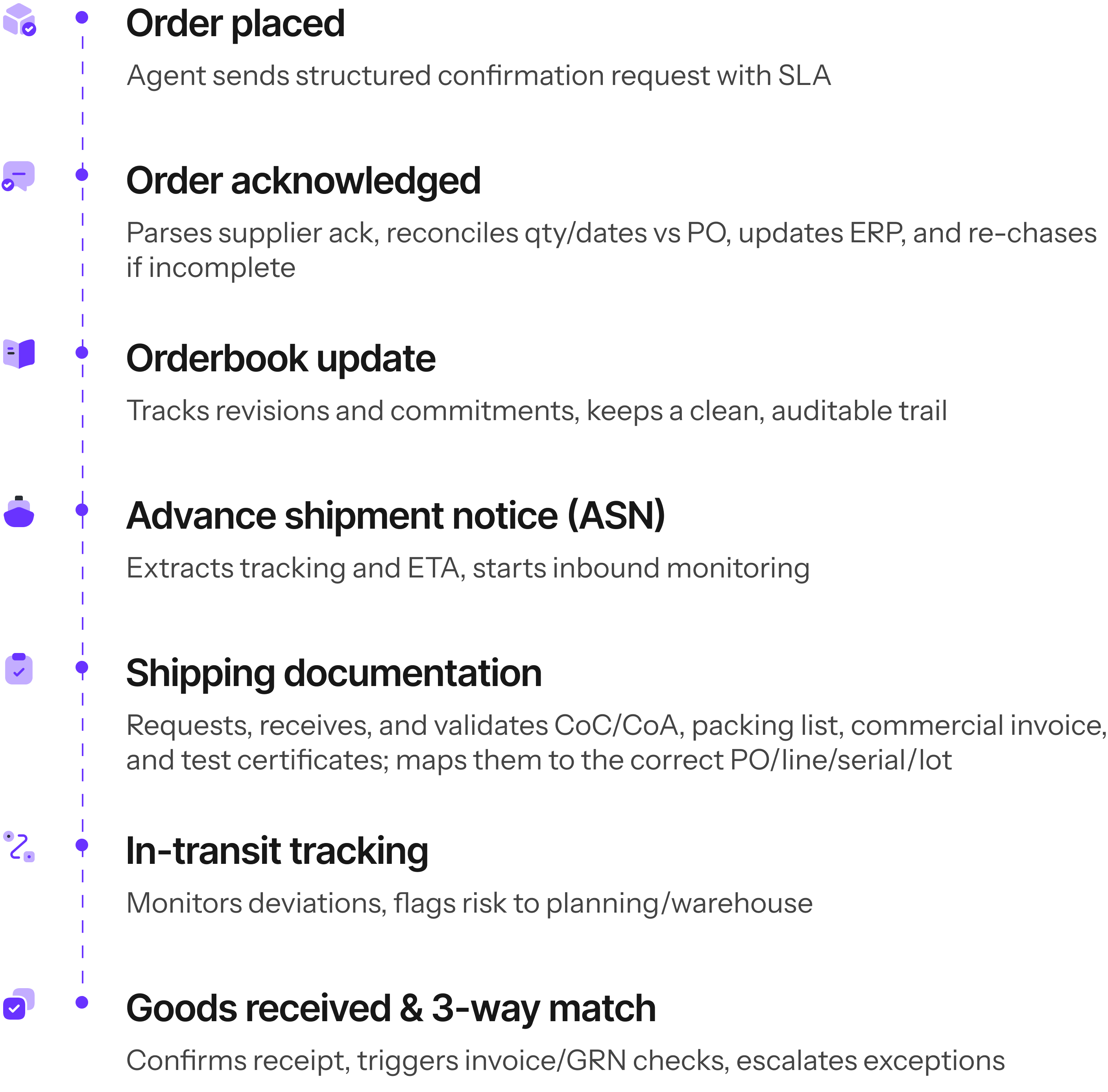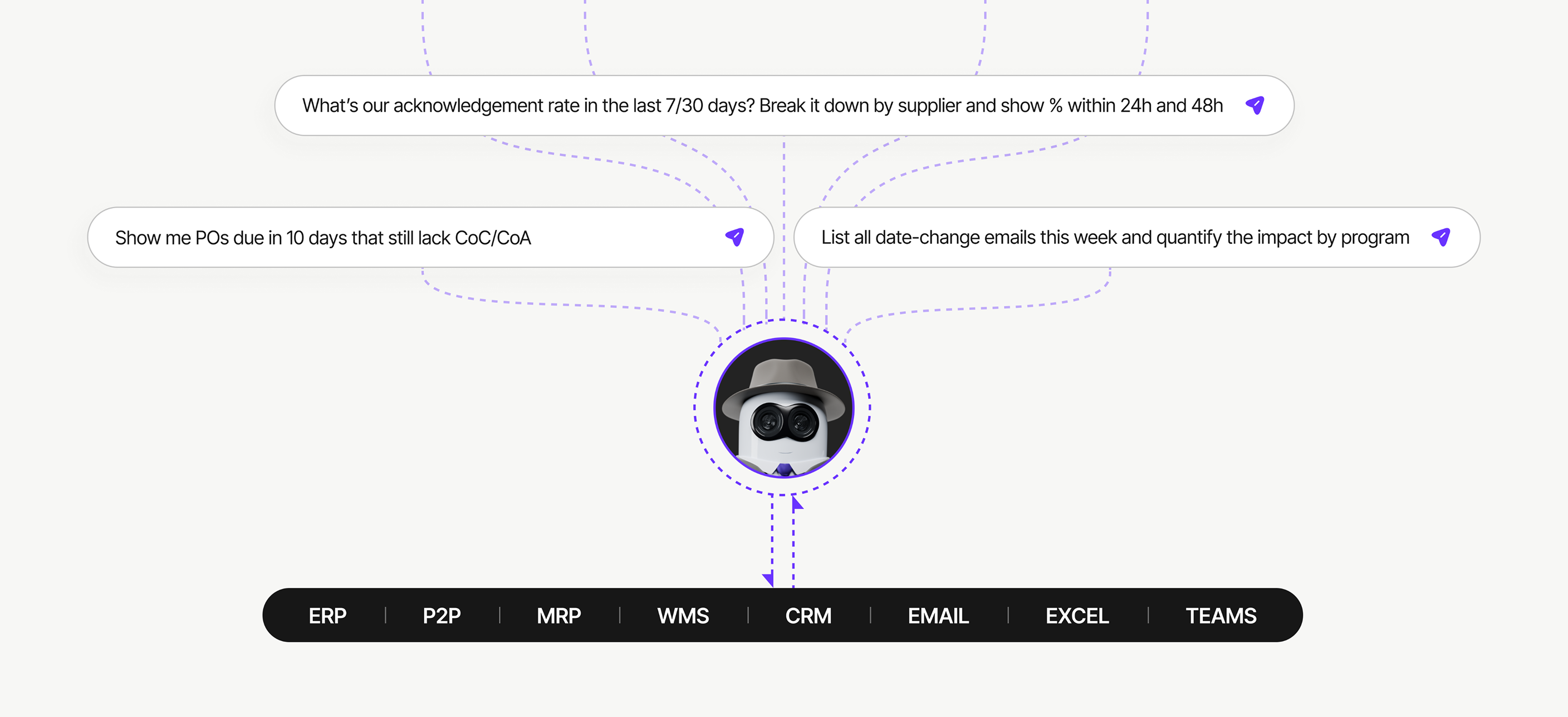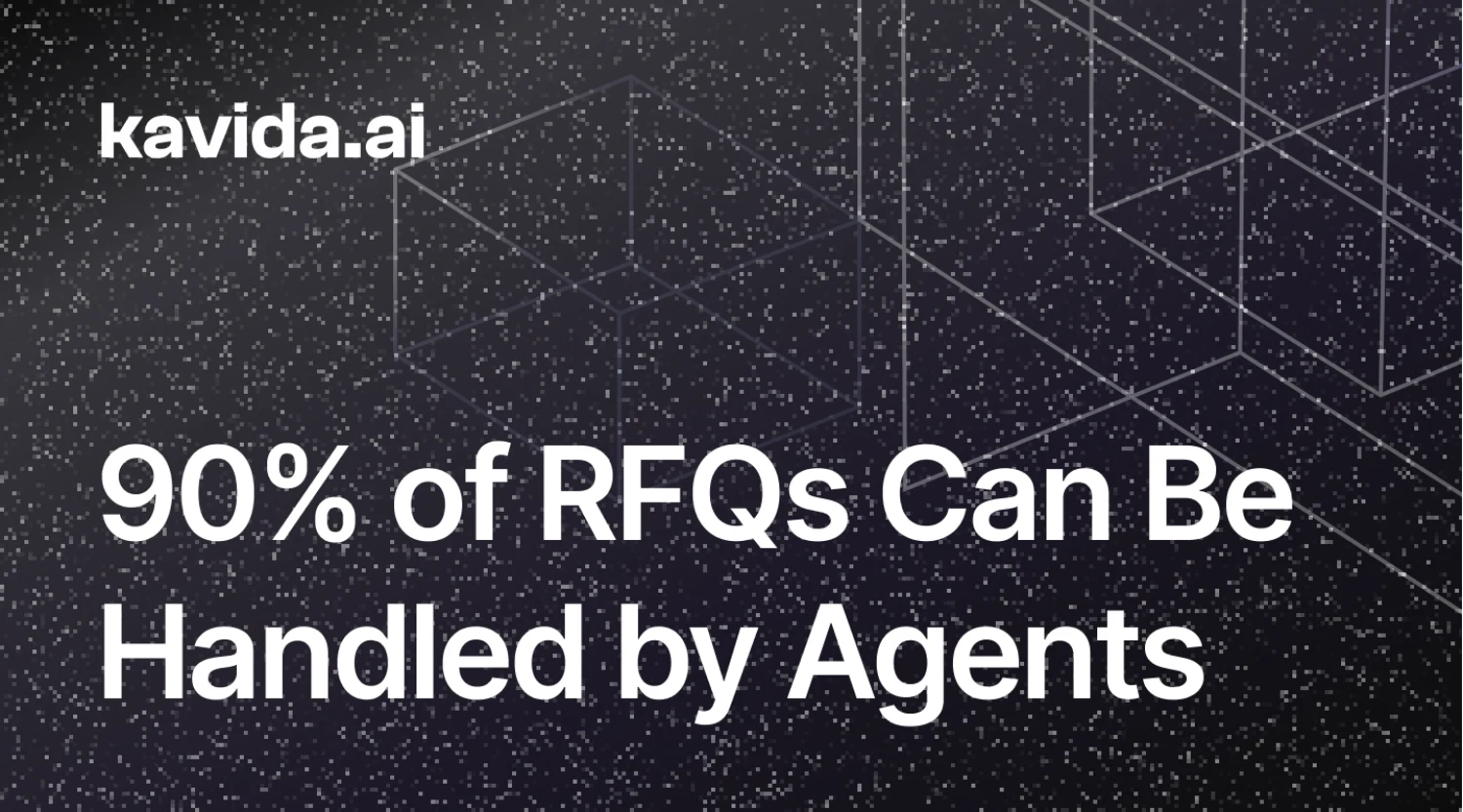
ANNOUNCEMENT
QAD Redzone acquires Kavida — our Agents have joined the Champion AI family

Discover how AI agents are reshaping the manufacturing operating model

Hi, I’m Alison!
Share your details, and I’ll give you a call in minutes to see how we can assist.

Your inbox is where procurement work actually happens — acknowledgements, updates, document exchanges, and escalations. Yet an inbox isn’t a workflow. Threads bury the facts that matter, attachments hide critical details, and the same questions get chased again and again. The result: hours of manual admin, blind spots, and avoidable risk.
AI agents change that operating model. Instead of asking people to read, copy-paste, and reconcile, agents watch, understand, and act—turning unstructured messages into structured commitments, keeping systems in sync, and surfacing only the exceptions that need judgment.
The Scale And Cost Of The “Inbox-as-system”
A typical buyer juggles hundreds of suppliers, thousands of parts, and millions in annual spend — much of it negotiated, confirmed, and chased via email. That means:
Work hides in unstructured threads
Key dates, promises, and risks sit in bodies of emails, PDFs, spreadsheets, and scans. Details confirmed in threads don’t reliably make it into ERP, leading to mismatches and surprises.
Time is consumed by low-value admin
Chasing confirmations, reconciling order books, renaming and filing attachments, and copying data into ERP steals hours daily.
Visibility is lagging and fragmented
Without structured data, leaders can’t get reliable, up-to-date views of risk, cycle times, or supplier performance.
Things slip through the cracks
Critical issues look like every other email unless you triage 24/7. Missed acknowledgements, undocumented spec changes, stale promise dates, and incomplete shipping packs create delays and rework.
Goods sits idle at a cost
Goods can physically arrive but remain unusable when CoC/CoA, inspection, or test certificates are missing or mismatched, driving idle-inventory cost, rescheduling churn, rush charges, and service-level exposure.
Why AI Agents Are A Force Multiplier
An AI agent sits alongside your email and ERP. It reads messages and attachments, extracts PO/line/part/qty/dates, reconciles against your system of record, and takes the next best action—then escalates only what needs judgment. Under the hood it follows a layered flow:

Delivered with hardened connectors, access controls, audit logs, and ERP-safe pushbacks.
How the Agent Works and What It Delivers
Connect and ingest
Secure connectors to email and ERP; ingest and parse emails and attachments (OCR where needed) with role-based access, audit logs, and ERP-safe pushbacks.
Extract and link
Pull out supplier, PO, line, part, quantity, and promised dates; link documents to the correct PO/line/lot/serial.
Normalize and reconcile
Match against master data and the PO; detect mismatches and keep an auditable trail of revisions and commitments.
Decide and act
Auto-chase acknowledgements, request/validate CoC/CoA/packing list/commercial invoice/test certificates, update ERP, and monitor SLAs with timed escalations.
Manage by exception
Surface only SLA breaches, missing docs, late/short risks, or other alerts; standardize comms so volume scales without extra headcount.
Granular data analytics
Produce live KPIs and trend insights (ack rates within 24/48h, promise-date drift, cycle times) for granular, in-flow intelligence.
Governed at every step
Actions remain traceable and compliant through connectors, access controls, and comprehensive auditability.
A Typical Post PO Workflow the Agent Runs (From Your Inbox)

What Insights The Agent Can Surface — Just By Sitting In Your Inbox
Because the agent sits atop an intelligence layer that connects ERP, P2P, MRP, WMS, CRM, Email, Excel, and Teams, you can ask it broader, decision-grade questions.

Less Firefighting, More Supply Assurance, and Measurable P&L Impact
Buyers lose hours every day hunting for facts in threads, resolving conflicts between promises and reality, and getting blindsided by last-minute issues. AI agents flip that script. They read and act at machine speed, keep ERP and documentation in lockstep, and bring the right exceptions to the surface before they become fires.
The outcome is fewer surprises, faster recoveries, and far less admin — so teams spend time securing supply, not chasing it.
Related articles

How Agents Unlock Supply Chain Integration After M&A
Mergers and acquisitions promise scale, efficiency, and new market reach — but in supply chains...

90% of RFQs Still Come by Email — Here’s How the Agent Responds for You
In an era of digital transformation, procurement teams might assume the days of email...

Why Aerospace Domain Knowledge is Critical for AI Transformation
AI is everywhere, but not all AI is created equal. Generic or “horizontal” AI vendors promise...

